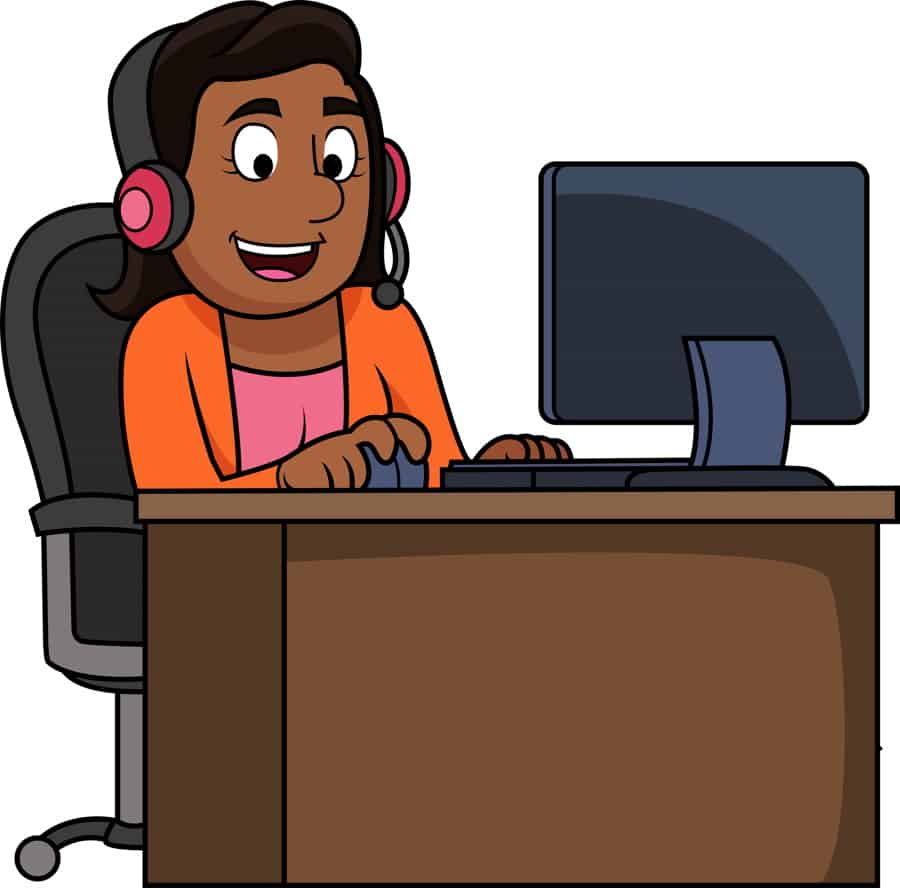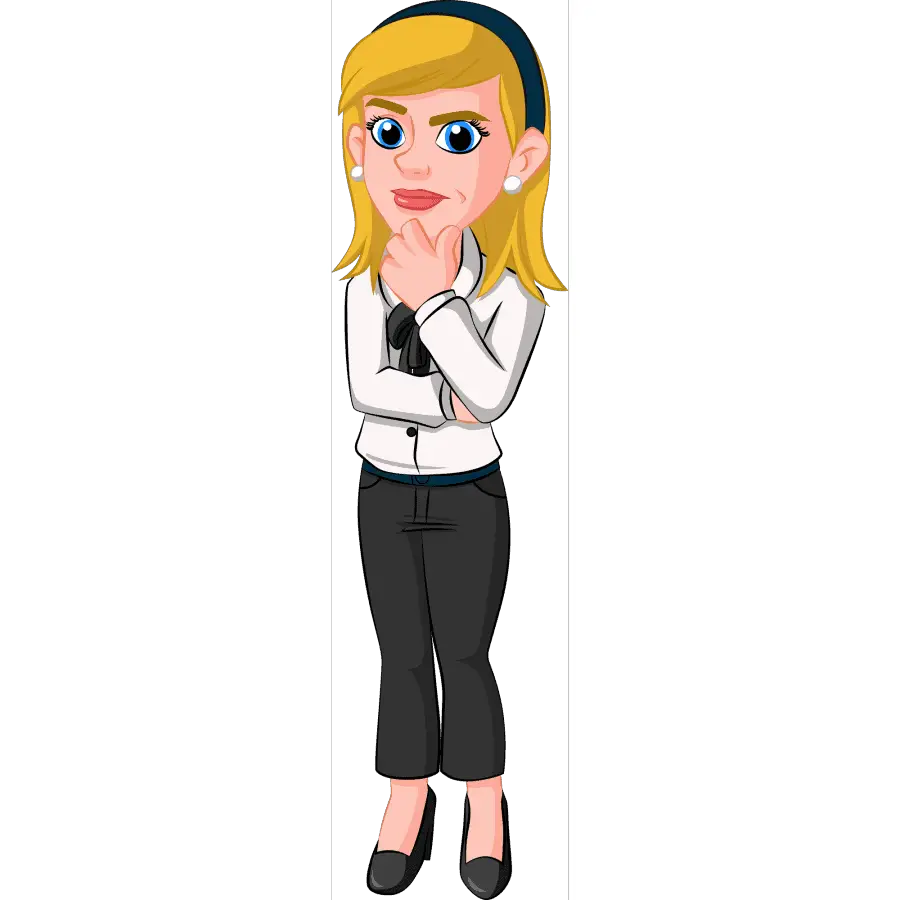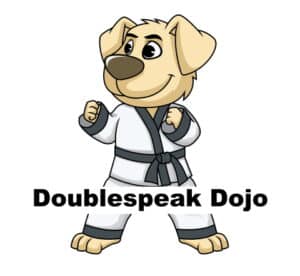
Learning Spanish can be very challenging, but it can also reward you with an opening into a culture that you would not otherwise have had. Furthermore, opportunities abound for English speakers in America who can speak Spanish. A knowledge of Spanish also gives you access to many exciting travel destinations.
For a comprehensive program that will take you from beginner to advanced, Rocket Languages is best while Duolingo is great for those who like games and want networking potential. Other notable programs are Rosetta Stone, Spanish Uncovered, SpanishPod101, Pimsleur Spanish, and News in Slow Spanish.
Read on to learn about Rocket Languages and Duolingo, as well as several other Spanish language programs, how they work, their benefits, limitations, and more.
Contents
Rocket Languages for Spanish Language (My Recommendation)
One thing to keep in mind when choosing a language learning program is that there are different learning styles. Some will suit the visual learner, but Rocket Languages is more suited to the audio learner.
It is designed for commuters, busy business owners, or students on the go. It has a website that supplements the audio lessons with a huge variety of excercises, but primarily it is meant to be used by people in motion.
Rocket Languages is a primarily audio course (with some reading) that can be accessed as a desktop version and on your mobile app. One advantage to Rocket Languages is that you download all of the audio portions you pay for (potentially the whole course) instead of having a subscription through which you access online content.
TIP: Rocket Spanish offers a free trial that allows you to experience the system first hand. I recommend everyone try out the free Rocket Spanish lessons.
How It Works
Rocket Languages takes a step-by-step approach to Spanish and teaches you the language by giving you conversations to listen to and then learn from. Created from a series of podcasts, a group of half a dozen lessons (give or take) from modules that make up larger blocks of learning.
The lessons themselves try to incorporate real-life examples and some humor as they take you from the basics of the language all the way to high intermediate learning levels. It is important to note that Rocket Languages focuses on Latin American Spanish, not Castilian Spanish, though you could still be understood in Spain if you take this course.
After you go through each lesson, the course reviews you on the material. It checks:
- Vocabulary comprehension
- Pronunciation
- Writing
It will have you repeat words and phrases from both Spanish and their corresponding English word or words. It will also test your writing with a virtual keyboard that allows you to work with accents.
The course teaches you about the Latin American culture with lessons that appear periodically in the different modules. These are not as in-depth as they could be, focusing on general cultural things rather than going deep into a region or country. But they at least serve as an introduction to the culture at large.
Added Benefits of Rocket Spanish

One of the review techniques is the use of flashcards, which builds a good deal of repetition into the program. You can even build and create your own flashcard deck if you find that there are certain words or phrases that you need to work on.
Another benefit to Rocket Languages is the Survival Kit. The Survival Kit is focused more on the application, bringing you into real-life situations that you might actually have to face in a Latin American country. In other words, what is the point in learning Spanish if you are not able to order a Taco in Mexico City?
As mentioned before, once you buy the program, it is yours, and their lessons are appropriate for all levels of learning, so the program will grow with you. The mobile app is also user-friendly and easy to navigate.
Summary
From beginner to advanced, Rocket Languages has audio lessons for every level of the audio learner. On the downside, if you are more of a visual learner, you will probably be bored by this program. Also, it is pretty heavy on the repetition. Again, that is a personal thing. Some will appreciate it, while some will not.
Then there is the cost. Rocket Languages is around $260 (with a coupon that is automatically applied—valued at around $450) for all three levels. Again, once it is yours, it is yours.
I recommend this program highly. Our family has and will use this for the beginning to intermediate levels of other languages. If you would like to try some lessons out for free, they have a free trial that allows you to take the system for a test drive.
Rosetta Stone for Spanish Language Learning

If there is a key to language learning, it is immersion, according to linguist and famed researcher, Stephen Krashen. Krashen is an expert on language acquisition and his findings can be applied to second and foreign language learning in that your program should be as natural as possible. (I’ve addressed language acquisition in depth here.)
As Krashen’s works have become more mainstream, immersion is most often the choice of the student. That being said, Rosetta Stone makes immersion a requirement, which is why it tops the list despite its drawbacks.
Rosetta Stone can be used on a laptop or a mobile app. The app lets you download lessons that you can play later without using data or Wi-Fi.
How It Works
Rosetta Stone does not translate into English and teaches you Spanish through the use of word and picture association. The process starts with simple vocabulary and moves on to phrases, and not once does the program help you with equitable words in English. This can be a sticking point for some.
Each block is also broken up into four sections. The pictures that the words are associated with are clear in the early blocks (given its just word association). But as the phrases become more complex, some pictures may become more difficult to decipher.
One of the key aspects of the process is the speech recognition software that the program uses. In this case, it checks for:
- Correct word usage
- Accurate pronunciation
Speech recognition technology makes sure that you are getting the words exactly right. It is not the same thing as a tutor, but it is close.
While this is a great benefit, which has been improved on over different versions, it still is not quite perfect yet. There are times when the recognition is not accurate enough and can be frustrating to users.
Added Benefits of Rosetta Stone for Spanish

In addition to pronunciation, Rosetta Stone educates and quizzes the user on speaking, reading, grammar, writing, and vocabulary. It also tracks your progress as you go through the program.
If you need extra practice, the program gives you a couple of options. You can practice with a phrasebook that you can access when you are not going through the normal track.
Rosetta Stone also gives you the opportunity to connect with a live tutor if you need additional practice. Depending on what package you get, you may have to pay additional for this.
Summary for Rosetta Stone
The downside to Rosetta Stone is that it is on the expensive side of the market.
- Lifetime subscriptions for one language cost around $300.
- Periodic sales bring that price down to around $200.
- Monthly subscriptions range from about $8 to about $12, depending on how far you purchase ahead.
Nevertheless, if you are able and willing to afford it, Rosetta Stone has a great approach to language learning that builds on the key element of immersion. It is ideal for beginning or intermediate learning, but the advanced learner will want to move on with something else later.
Spanish Uncovered
This program was developed by Richard Olly, a man who says he can speak eight languages. The course is based on his own experience learning Spanish in Argentina when he plunged into the Gabriel Garcia Marquez book, Chronicle of a Death Foretold, which was in Spanish, with little knowledge of the language.
As such, the course itself is an immersion-style course, similar to Rosetta Stone in that sense, but very different in its approach. Lessons require a lot of:
- Time
- Classroom style attention span
- Note-taking
How It Works
Since Olly learned from a story, he teaches you by structuring the whole experience around a story, something that would suit someone with a narrative learning style. You begin by hearing and reading the first chapter of the story in Spanish. You can go over it as many times as you want.
After you have done that, and probably not understood much about it, then you look for cognates, words that appear to be similar in both Spanish and English. Once you identify what you can, you watch a video in which Olly shows you all the cognates and teaches you from there. There is a lot in these videos, so be sure to take notes.
You are then quizzed about the story, even though you still probably do not understand much about it before you are given the English translation. But the lesson does not stop there. You move on to another video from Olly (and more note-taking from you), which includes:
- A lesson on vocabulary
- A PDF worksheet
Next, you go over grammar and watch a third video (and take even more notes), and do more exercises from another PDF. Then there is a short section in which you work on pronunciation through videos with a Spanish speaker and finally a section in which you practice speaking (ideally with a partner).
Added Benefits
One of the added benefits is the classroom-style learning with the movement of the lessons going back and forth between:
- An example
- A “lecture”
- Worksheets
This style may appeal to some who feel comfortable and motivated to learn if they are in a classroom-like structure similar to school.
Another benefit is Olly himself. His personality is large and in charge throughout the lessons. For some people, his persona could be a turn-off, but for others, this could bring a relatable and reliably consistent personality to learning the material that makes them feel comfortable.
Summary
Spanish Uncovered is an immersive experience that forces you to grapple with the language head-on. It is designed for beginners but can certainly be used by those who have a passing or even intermediate knowledge of the language.
However, what is an asset for some can be a deficit for others. Some may find the process of immersion too:
- Overwhelming
- Confusing
- Frustrating
This brings up the other problem. Many programs have a free trial, but Spanish Uncovered only offers a money-back guarantee for the first month.
No doubt you will put a lot of thought into any of the programs you chose, but you will want to think long and hard about Spanish Uncovered before you sign up.
Duolingo
Choosing a language learning program depends as much on how you learn as the program itself. For some people, formal learning strikes fear in the heart. But if the lesson is turned into a game, it can be both exciting and instructional.
Duolingo is all about making the language learning process fun, and they do it with game-style motivation in which you can earn points to get awards and “Lingots,” which is money in Duolingo. In other words, Duolingo takes you out of the stale classroom and puts you onto the playground. Best of all, the app is free.
How it Works
You can connect to Duolingo online through either your desktop or a phone app, though you cannot download lessons unless you get the subscription version. You can choose to start by taking an assessment, which will adjust in difficulty according to how you answer the questions. Duolingo uses a story format to get you identifying:
- Words
- Phrases
- Sentences
You listen to a speaker say the word or sentence, and you then have to type the word that you hear.
The app will also give you sentences in Spanish that you must type in English. The app offers the definitions of certain words that you have not gone over, so you do not have to lose points over something you have not yet learned. It is also forgiving with typos and does not dock you for a mistake you could make in your own language.
Duolingo does all this in a cartoonish, game-style setting with a colorful owl to cheer you on. You are given daily goals and awarded points, which are compared, leaderboard style, with others who are using the app. For those with a competitive streak, this provides motivation to:
- Keep up with the daily goals
- Try as hard as you can to earn points
- Not slack off for a day or two
Added Benefits

Of all the different programs out there, Duolingo has become one of the most popular. Much of this is due to the way they approach learning, but another factor is the Duolingo community, offering:
- Lively participant discussion
- Group-style study sessions if you are struggling with a concept
- Scheduled community events
The addition of the Lingots is a nice touch as well. This is not a pay to win setup. Rather you can “purchase” additional exercises like a timed quiz or a break for yourself that allows you to take a day off without losing your standing on the board.
Summary of Duolingo Spanish
One of the best things about Duolingo is that it is free and does not come with added “software” when you download it. It is all online. Unfortunately, you need either Wi-Fi or data to access the content. However, you can download lessons if you have a monthly subscription, which is about $13 monthly or about $7 a month if paid ahead for a year.
The structure of the program is such that, unlike other programs such as Spanish Uncovered or Rosetta Stone, it gives you lessons in small, achievable bites. However, Duolingo is not comprehensive, being weaker on the speaking and grammar elements, so you might not achieve fluency with this app but certainly functionality.
SpanishPod101
Here is a unique program that tries to split the difference between a structured, step-by-step course and a resource of lessons that you can pick and choose from depending on what you feel like focusing on.
As a result, SpanishPod101 can be good for both beginners who need a place to start and more advanced speakers who need to brush up on some skills and who know what those skills are and where to find them.
How It Works
SpanishPod101 started out focused on audio learning, but now it contains a mix of audio and video lessons that you can choose from. The lessons are hosted by different contributors—as opposed to one anonymous voice, on the one hand, or one language guru on the other—and give space for the contributors to have a personality.
The lessons usually start out with banter between a contributor and a native speaker that is conversational and sets the context for what you will be learning. Some people will enjoy this, and others will find it annoying. You can choose to skip it if you do not like it.
For those who are new to the language, SpanishPod101 offers what it calls “Learning Paths,” which give the beginner a direction to go. These lessons are:
- Hosted by many different contributors
- Thematically related in terms of material
- Build from one lesson to the next to create more systematic learning
Added Benefits of SpanishPod101

The interactive nature of being able to control the approach you want to take can be a positive. Some people would rather tinker with different topics building their way to the top.
This makes SpanishPod101 a great resource for those who already know something about the language and want to jump in at a certain spot.
Having different contributors is also a nice touch. This means you get different personalities to break up the monotony of learning what can sometimes be a lot of dry material. Also, the contributors take you directly into the language with real conversation and keen cultural insight.
It should further be noted that, while SpanishPod101 started life focusing on Latin American Spanish, it has broadened to include other versions, including:
- European
- South American Spanish
These options give the learner an encounter with the language that goes both broad and deep.
Summary
There are some downsides. If you want to learn grammar and think it is important by the intermediate levels, this app will not be for you. Also, like Duolingo, it does not have a strong speaking component.
Furthermore, while the library of lessons is massive, it can be overwhelming for the beginner, even with the Learning Paths.
Nevertheless, for the learner who wants to forge a unique path, this language program may be a good fit. SpanishPod101 pricing is a bit complicated with a lot of choices. For our purposes, you can spend as little as about $8 or as much as about $549. The offerings vary accordingly.
Pimsleur for Spanish
Developed by linguist Paul Pimsleur back in the early 1960s, this methodology is the old dog on the block as far as language learning programs are concerned, but it is still effective. Pimsleur is an auditory method of learning Spanish that puts you into a conversation focused view of the language.
Because it delves into language needed for everyday circumstances, it is suited to people who are going overseas or south of the border and want to interact with the culture they are encountering. On that note, Pimslery has courses available that focus on either Latin American Spanish or Castilian Spanish.
How It Works
Pimsleur was designed to be listened to while you are doing something else. It requires concentration, but the advantage here is that you can do it while you are:
- Washing dishes
- Folding the laundry
- Walking the dog
During a lesson, you will hear a conversation, and then the instructor will backtrack through the conversation to point out words and phrases and make comments on grammar. One of the important aspects of this technique is how the material spreads out the comprehension of what you have learned.
Keywords and phrases that you have gone over will surface again, farther and farther down the line, building your retention of the material. You also have the opportunity to practice what you have learned.
There are several different practice activities that you can do. You can set up your flashcards so that you translate either from Spanish or from English. Those that you do not get right will come around again. You can take multiple-choice quizzes and choose to follow through earlier conversations as they are written out on the screen.
Added Benefits from Pimsleur
If Duolingo is designed to look like a cute, exciting game, Pimsleur looks like those soothing word puzzle apps. It is professional, but without a lot of visual additions, so this program is not for the visual learner.
Nevertheless, the Pimsleur methodology has been around for a long time and is built on a trusted and experienced approach to language learning. It takes into account the learner’s desire to think through and participate in the lessons as they are happening, and it develops an understanding of language in real-life scenarios.
Summary
This is a subscription-based program that is available for different prices depending on the course:
- It is around $20 a month for the Latin American course
- It is around $15 a month for the Castilian course
There is not going to be a lot here for the visual learner or for the person who needs a mildly exciting motivation, like earning points. However, if you learn best by hearing and participating vocally as the lesson is progressing, then Pimsleur may be a good choice for you, and it does come with a weeklong trial.
News in Slow Spanish
One method to consider when learning Spanish is to use a couple of programs in conjunction with each other. Duolingo is the best choice for a pairing because it is free, and it would go well with our final Spanish learning program, News in Slow Spanish.
The name describes the program. It is moderated by a couple of hosts who read news articles of current events slowly. And in Spanish. Not much English is spoken, which makes this method immersive and not always the best for beginners who are totally unfamiliar with the language.
How It Works
Initially geared toward the intermediate Spanish learner, the main thrust of the program still works this way. The hosts read four news articles then talk about them in an entertaining way that manages to highlight grammar and usage without you actually realizing it. It is hard to believe, but it is true.
In addition to that, the hosts share opinions and observations about the article or about the region in which it is focused. All of this, of course, is in Spanish. The program was not developed by scholars but by journalists and linguists and is a great way to develop an immersive intermediate practice of the language.
They also have a section for beginners. To clarify, “beginners” means those who have had at some point a basic familiarity with the language. To that end, they have designed the beginner’s course to freshen you up on what may be a hazy recollection of high school Spanish.
Like Spanish Uncovered, they draw you in with simple stories read slowly and concisely and then go over vocabulary and grammar. Actually, they open with the grammar lesson. But the program owes a lot to the hosts who make the lessons entertaining and disarming in a way that does not sound stilted.
Added Benefits

News in Slow Spanish is for the daring beginner, but it is well worth the effort. For the beginner, intermediate, and advanced learners, the program delves into the news in a way that immerses you in both:
- The language
- The culture surrounding the language
You go through the lessons with a transcript of them in front of you that has highlighted words, which you can expand by hovering your mouse over them. It also offers a course focused purely on grammar and a huge library of content.
Summary
With a little preparatory work on an app like Duolingo, News in Slow Spanish is a great immersive program to get into. It is subscription-based for around $23 a month, which is a little on the pricey side but may well be worth it for news junkies.
Think of what you would pay for any other immersive experience that also slows down enough to teach you the fundamentals of the language. The nearest thing would be a trip overseas, and native speakers are not going to explain themselves.
That being said, many of these types of programs that slow down the language may help beginners, but not intermediate and advanced learners. Moving through the intermediate stages and into the advanced levels requires full speed and authentic language as it would be heard in day to day speech.
The slow pace may give a false sense of security which could lead to frustration when trying to understand actual speed conversations.
Final Talking Point for Spanish Language Learning Programs
With all the Spanish language learning programs out there, it’s no wonder it can feel overwhelming.
With the reviews above listing how they work, their benefits, and limitations, I hope you feel more prepared and ready to start your preferred learning program rápido!
To recap: Rocket Spanish is one I highly recommend based on its comprehensiveness and ability to grow with you from beginner to advanced. It’s a robust plan and has a lot to offer. You really can’t go wrong!
I also recommend Duolingo for anyone interested in game and network-style learning, and prefer the convenience of an App-ready program. In fact, it’s also my opinion that it’s great as a supplement to another program.
If you’re able, blending your learning program to incorporate 2-3 options would really give yourself the full Spanish immersion experience. The main thing is to find what works best for you! Good luck, mis amigos!
